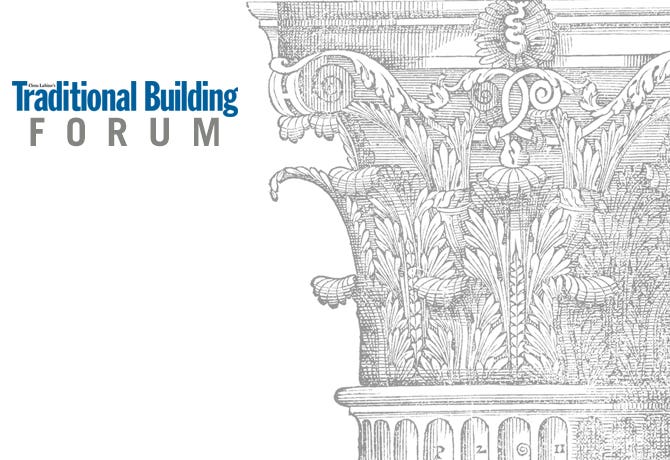
The Forum
Replacing the Secretary’s Standards
By Gary L. Cole AIA, Esq.
“The Standards are neither technical nor prescriptive, but are intended to promote responsible preservation practices that help protect our Nation’s irreplaceable cultural resources. For example, they cannot, in and of themselves, be used to make essential decisions about which features of the historic building should be saved and which can be changed. But once a treatment is selected, the Standards provide philosophical consistency to the work.”
– Introduction to Standards and Guidelines, National Park Service
On January 25, 2013, U.S. Secretary of the Interior Ken Salazar asked the National Park Service (NPS) to conduct an internal review of the Federal Historic Preservation Tax Incentives Program (HTC) to “. . . make sure that we are doing everything we can to work in partnership with local communities, developers and other stakeholders to provide guidance and promote restoration efforts.”
This is welcome news, though as a former Illinois State Historic Preservation Office (SHPO) staff architect charged with interpreting the Secretary of the Interior’s Standards for Rehabilitation (Standards) for the HTC and other historic rehabilitation tax-incentive programs and now as a private practice attorney, I temper expectations. Governmental reform is rarely a swift or revolutionary process.
Many of historic preservation’s laws and programs are nearly old enough for their own historic designations and are in dire need of rehabilitation. The public would certainly benefit from a little regulatory tinkering with the HTC program, starting with eliminating application fees and the redundant SHPO and NPS review process.
However, meaningful reform includes reforming the way historic properties and communities are able to attract reinvestment capital for business growth, job creation and local economic stability. This should start by relegating the Standards to their intended role of simply providing philosophical consistency to historic rehabilitation efforts, and not as a de facto historic building code by historic preservation administrative entities.
Hardly changed since their inception in 1977, the Standards comprise a ten-point manifesto of historic preservation’s essential rehab doctrine as enforced by federal, state and local historic preservation regulatory entities. While philosophical guidance can inform the development of federal regulations with high social and legal aspirations, the vague language of the Standards bars the public from any objective, plain meaning understanding of their text. Published “Interpretations” of the Standards by the NPS have merely transformed doctrine into dogma.
In Need of Reform
Though most of the Standards have retained their relevance, some, such as the unloved Standard No. 9, is the product of an outdated 1970s Modernist architectural bias and should be eliminated. Communities seeking to redevelop their historic properties compete with other communities for a limited pool of private reinvestment capital. When faced with choices, developers and investors will often chose the more predictable and less risky of those options. The ambiguous Standards and their unpredictable interpretations by administrative entities can decrease the former, increase the latter and discourage reinvestment in historic properties.
But the solution is simple: the Secretary of the Interior should support phasing out the Standards and replacing them with a Model Historic Building Code that conforms to the Federal Plain Language Guidelines, combines the ethics of the Standards with clear performance and prescriptive rehabilitation requirements; embraces 21st-century preservation technology and materials science; and, incentivizes reinvestment to create economic sustainability. A model code should be created as a deeply integrative collaboration between public regulatory and private development and investment interests with significant contribution from historic preservation, architectural, construction, community development, sustainable design, and accessibility, legal and financial interests.
A Model Historic Building Code should also be adopted and administered at the municipal level according to local conditions and community support in a way the Standards, as intractable federal regulations, cannot. Historic properties are a special type of real estate, but all real estate, as they say, is local. Decisions to adopt the model code should also be local.
Recent legislation may both mandate and foreshadow reforms to the Standards by the passage of the Plain Writing Act of 2010, already implemented by the National Park Service. It requires federal agencies to communicate clearly with the public. In addition, President Obama’s Executive Order 13563, “Improving Regulation and Regulatory Review,” dated January 18, 2011, states: “Our regulatory system must . . . promote predictability and reduce uncertainty . . . It must ensure that regulations are accessible, consistent, written in plain language, and easy to understand.”
And the pending “Plain Regulations Act of 2012,” which has as its stated purpose: “To ensure clarity of regulations to improve the effectiveness of Federal regulatory programs while decreasing burdens on the regulated public,” speaks directly to the problem with the Standards and makes the development of a Model Historic Building Code all the more timely.
Secretary Salazar’s directive to reform the HTC program is commendable, but it should include a mandate to replace the Standards with a Model Historic Building Code the public can objectively understand and that better assists historic properties and communities to attract reinvestment capital.
“Sustainability” is a much-bandied term in historic preservation, but there’s really only one kind of sustainability that actually preserves historic properties: economic sustainability. It’s certainly the kind that matters most to struggling historic communities.
Gary L. Cole AIA, Esq. is an Illinois and Florida licensed attorney and Illinois licensed architect with over 20 years of experience in a wide variety of historic preservation roles including state government; as a Visiting associate professor of Architecture/Preservation at the University of Illinois, as General Counsel and Founding Board Member of the Chicago-Midwest Institute of Classical Architecture & Classical America; and in private architectural and law practice specializing in historic property redevelopment. He publishes frequently about a wide range of real estate development, construction, dispute resolution and historic preservation related subjects at www.garylcolelaw.com/ and at his new website “Historic Preservation 2.0 – The Future of the Past” at www.newhistoricpreservation.com.








